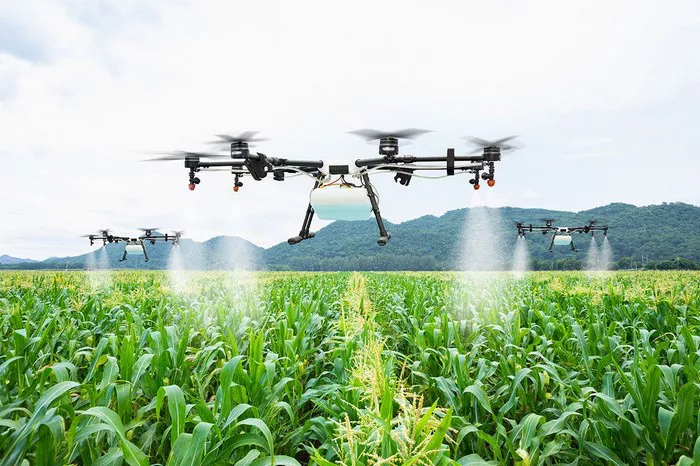Drones are rapidly transforming modern farming, and southwest Georgia farmer Alex Harrell is a prime example of how this technology can improve efficiency and save money.
Covering Large Acreage with Precision
Harrell farms 4,000 acres of corn, soybeans, watermelons, and wheat in Lee County, Georgia. With just two drones, he can spray foliar nutrients, fungicides, and stink bug treatments on about 500 acres daily — and even more when needed.
“We rarely call in an airplane anymore because we can mix and spray everything ourselves on our own schedule,” Harrell explains. This flexibility allows applications at any time of day, tailored perfectly to crop needs.
Timing is Everything for High Yields
For Harrell — who holds world records for soybean yields — timing spray applications is crucial. “Without timeliness, it doesn’t matter what you spray or fertilize; it won’t work right,” he emphasizes in a recent podcast interview with world champion corn grower David Hula.
Despite some farmers’ concerns that airplanes can spray much more acreage in a day, Harrell points out the cost differences and argues that drones empower farmers to control the process themselves without relying on pricey aerial applicators.
Creating New Revenue Opportunities
Wisconsin farmer Caleb Wolters also sees drones as a game changer. He’s using his drone for his own farm work and has started doing custom spraying jobs for neighbors, adding a valuable new income stream.
Learning and Improving with Experience
Harrell has been using drones for four years, learning through trial and error. “We’ve wrecked several drones, found glitches, and tried multiple models,” he says, “but overall they’ve been really helpful.”
According to Arthur Erickson, CEO of drone maker Hylio, there are currently 30,000 to 40,000 agricultural drones operating in the U.S., equipped with sensors that provide valuable data on crop health and soil conditions.
Better Technology Means Better Performance
Drones have improved dramatically. Harrell recalls starting with 30-liter tanks and spray tips that clogged easily, but now he uses drones with 50-liter tanks, bigger pumps, and better atomizers that allow faster, more effective spraying — sometimes applying up to 3 gallons per acre.
Innovative Uses: Desiccating Soybeans and More
Beyond spraying, Harrell uses drones to desiccate mature soybeans in two passes for better penetration and earlier harvests, preserving yield and quality.
He also shared a funny story on the podcast about using a drone to help install a gearbox on a 120-foot grain bin elevator — a clever, cost-saving alternative to renting a crane.
Related topics:

